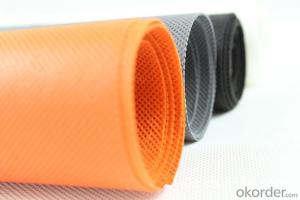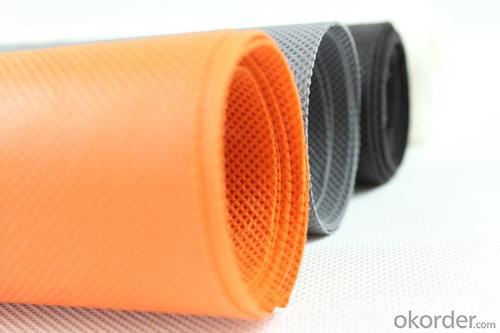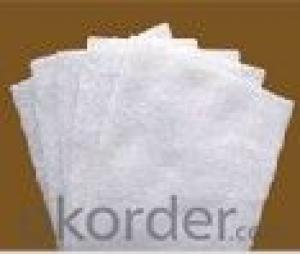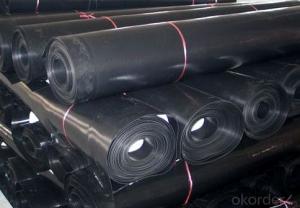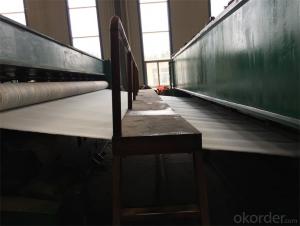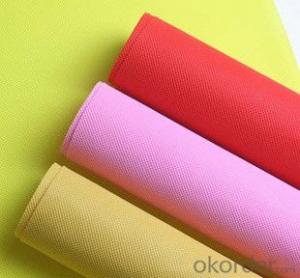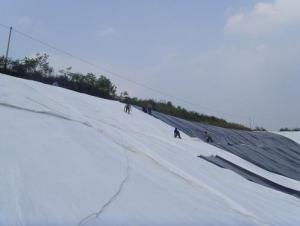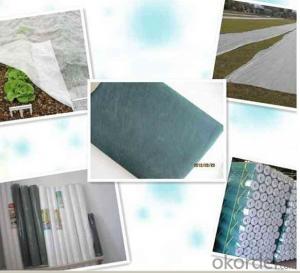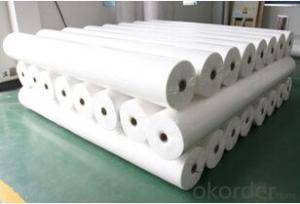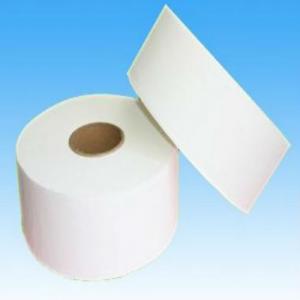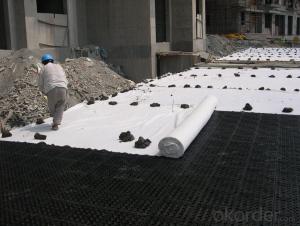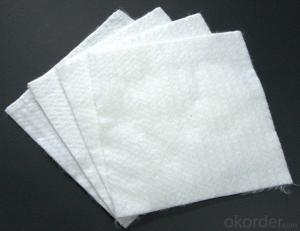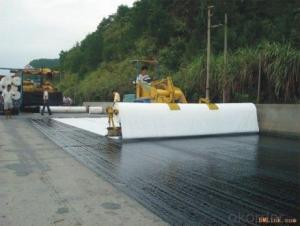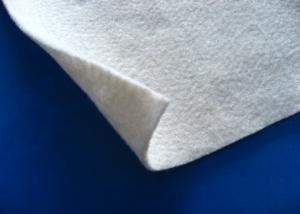Best Geotextile PP Spunbonded Nonwoven Fabric Blue and Red
- Loading Port:
- China Main Port
- Payment Terms:
- TT OR LC
- Min Order Qty:
- -
- Supply Capability:
- -
OKorder Service Pledge
OKorder Financial Service
You Might Also Like
PP Spunbonded Nonwoven Fabric different color for agriculture
Specification of Polypropylene Spunbond Non Woven Fabric:
| | |
Material | 100% Polypropylene/100%PP |
Width | 0.4--3.2M |
Color | Any color available |
Roll Length | According to your requirement |
Technics | Nonwoven |
Nonwoven Technics | Spunbonded |
Pattern | Yarn Dyed |
Weight | 9-200GSM |
Style | Plain |
Feature | Waterproof,Mothproof,Eco-friendly,Non-toxic,Breathable,Anti-Bacteria |
Certification | ISO9001 |
Usage | Agriculture,Indrustry,Construction,Packaging,Home-textitle, etc |
MOQ | 1Ton/1000KG |
Payment Terms | T/T or L/C |
Delivery Time | Within 7-15 days |
Packaging Detail | Plastic film in roll |
| Shandong,China |
Loading of Port | Qingdao |
Sample | Free samples are available |
Introduction of polypropylene spunbond non woven fleece fabric is used to protect the crops in agriculture UV resistance masterbatch could be added 1%~8%. It can protect the vegetable crops and new lawns against extreme weather, animal and insect damage, yet allows light, water and air to penetrate, creating protected growing conditions..
- Q: How do geotextiles contribute to sustainable construction practices?
- Geotextiles contribute to sustainable construction practices by providing a range of beneficial functions. They can stabilize soil, prevent soil erosion, and enhance drainage systems, which reduces the need for excessive excavation and reduces the amount of construction materials required. Geotextiles also promote environmental protection by filtering out pollutants and preventing their migration into surrounding areas. Additionally, they prolong the lifespan of infrastructure, reducing the need for frequent repairs and replacements, thereby minimizing the consumption of resources and energy. Overall, geotextiles play a vital role in sustainable construction practices by promoting efficiency, cost-effectiveness, and environmental conservation.
- Q: 200g geotextile how much money a square
- Geotextile laying - including the labor costs (according to geotextile specifications and laying conditions and requirements are different), material costs (specific quality requirements and thickness, are not the same ..), mechanical use costs (such as transport, sewing System, hoisting, etc.). The price is different. Sometimes the construction of our geotextile laying, the price per square meter from 9 yuan to 50 yuan range.
- Q: How do geotextiles help with load distribution in pavement systems?
- Geotextiles help with load distribution in pavement systems by providing a flexible and stable foundation. They act as a reinforcement layer, spreading the load from traffic evenly across the pavement surface. This helps to prevent the formation of stress points and reduces the risk of pavement failure. Geotextiles also help to reduce the amount of rutting and cracking in the pavement, leading to increased durability and longevity of the road.
- Q: Detailing the geotextile standard which, how to apply their own
- Detailing the geotextile standard which, how to apply their own
- Q: Geotextile belongs to what industry
- Geotextile belongs to the building materials industry
- Q: Can geotextiles be used in canal lining projects?
- Yes, geotextiles can be used in canal lining projects. Geotextiles provide effective erosion control, soil stabilization, and water drainage capabilities, making them suitable for lining canals to prevent soil erosion and maintain the integrity of the canal structure.
- Q: How do geotextiles contribute to the safety of transportation infrastructure?
- Geotextiles play a crucial role in enhancing the safety of transportation infrastructure by providing soil stabilization, erosion control, and drainage management. They prevent soil movement and erosion, which can undermine the stability of roads, slopes, and embankments. Geotextiles also help improve the load-bearing capacity of the soil, reducing the risk of structural failure or settlement. Additionally, these materials promote effective drainage by allowing water to pass through while filtering out fine particles, preventing waterlogging and soil saturation. Overall, geotextiles contribute to the overall durability, longevity, and safe functioning of transportation infrastructure.
- Q: Can geotextiles be used in subgrade stabilization?
- Yes, geotextiles can be used in subgrade stabilization. They are often used to improve the stability and strength of the subgrade by reducing soil erosion, providing drainage, and enhancing load distribution. Geotextiles can help prevent the mixing of subgrade soil with the overlying base materials, thus reducing the potential for settlement and deformation.
- Q: What are the common problems encountered during geotextile installation?
- Some common problems encountered during geotextile installation include improper placement or alignment, inadequate tensioning or anchoring, damage to the geotextile during installation, inadequate overlap or seam strength, and difficulties in handling or maneuvering the geotextile due to its size or weight.
- Q: Can geotextiles be used for erosion control in river channels?
- Yes, geotextiles can be effectively used for erosion control in river channels. Geotextiles are permeable fabrics that can be placed along riverbanks and channels to stabilize the soil and prevent erosion. They act as a barrier, reducing the velocity of water flow and preventing sediment from being washed away. Additionally, geotextiles promote vegetation growth, further enhancing erosion control.
Send your message to us
Best Geotextile PP Spunbonded Nonwoven Fabric Blue and Red
- Loading Port:
- China Main Port
- Payment Terms:
- TT OR LC
- Min Order Qty:
- -
- Supply Capability:
- -
OKorder Service Pledge
OKorder Financial Service
Similar products
Hot products
Hot Searches
Related keywords
